Animals living in caves have attracted the interest of naturalists and biologists since the beginning of modern science (Poulson & White, 1969; Vandel, 1964). Caves and other subterranean habitats are often perceived as extreme environments that deserve investigation because their simplified settings can help to understand evolutionary and ecological processes (Howarth, 1993; Mammola, 2019; Moldovan et al., 2018). Species adapted to caves and other underground habitats frequently show unique features such as blindness, depigmentation, loss of circadian rhythm, and low metabolism (Culver & Pipan, 2019; Moldovan et al., 2018; Romero, 2009). These traits are often defined as “troglomorphisms” and are frequently related to the level of specialization in subterranean environments (Mammola, 2019; Trajano & De Carvalho, 2017; Trontelj et al., 2012). Highly troglomorphic animals that are assumed to be obligate to live underground are named “troglobionts” (i.e., cave inhabitants) if ground living, and “stygobionts” (i.e., inhabitants of the Styx, a Greek mythological subterranean river) if aquatic (Culver & Pipan, 2014; Romero, 2009). For some time now, subterranean troglomorphic animals have been considered examples of enigmatic “regressive” evolution (Poulson, 2001, 2011; Vandel, 1964), and adaptations to cope with underground habitats are still largely seen as evolutionary dead ends, thus confining the range of the animals that are adapted to them (Barr Jr & Holsinger, 1985; Culver & Pipan, 2009; Poulson & White, 1969).

The olm, Proteus anguinus, is one of the most iconic stygobionts. Except for a clade living in a handful of springs in southern Slovenia (the “black olm” described as Proteus anguinus parkelj Sket and Arntzen (1994)), olms are a complex of depigmented and blind salamanders, specialists of groundwaters (Balazs et al., 2020), that probably colonized caves 8–20 million years ago (Mya) (Bulog, 1994; Recknagel et al., in press; Trontelj et al., 2007). Olms are the largest troglobiont vertebrates in the world and the only stygobiont amphibians of the Palearctic (Balazs et al., 2020). They show impressive adaptations to underground life, including magnetic sensing that partially compensates for blindness (Bulog, 1994; Durand & Parzefall, 1987; Guillaume, 2002; Schlegel, 2008), low metabolic rates (Bizjak Mali et al., 2013), high tolerance for low levels of dissolved oxygen (Beale et al., 2016), and exceptional longevity (Vandel & Durand, 1970). Olms are also obligate paedomorphs, and their study can help in understanding the links between the evolution of paedomorphosis and adaptations to underground environments (Bonett et al., 2014, 2022). Breeding seems to occur infrequently, with females laying eggs approximately every 12 years (Lanza et al., 2009; Vandel & Bouillon, 1959). Olms are considered the top predators of the groundwater ecosystem they inhabit (Manenti et al., 2020). So far, most of the behavioral, biological, and ecological information existing on the species originates from individuals studied in laboratories under artificial conditions (e.g., Guillaume, 2002; Hervant et al., 2001; Manenti et al., 2020; Schlegel, 1997; Uiblein et al., 1992; Voituron et al., 2023), whereas field observations are rare (Balazs et al., 2015, 2020; Voros et al., 2019).
Despite traditional studies assuming that animals specialized to live underground are strictly bound to the subterranean environment (Barr Jr & Holsinger, 1985; Mammola et al., 2018; Poulson & White, 1969), there is growing evidence that the ecological separation between cave-dwelling and surface animals is not always clearcut, with some surface species actively exploiting underground environments for specific tasks/stages (Lunghi et al., 2014). As an example, it is well documented that populations of typical surface species, like the Pyrenean newt Calotriton asper, regularly exploit groundwaters (Guillaume, 2022; Uiblein et al., 1995). Conversely, the possibility that troglobionts actively exploit surface environments remains controversial. Several authors have stated that that this can only occur accidentally, and troglobionts are unable to actively exploit surface environments. However, our understanding of processes occurring at the interface between underground and the surface remains incomplete, also because of the scarcity of studies on these environments.
The aim of this study was to provide empirical evidence that a groundwater specialist like the olm can actively exploit surface habitats for specific tasks, and to provide novel information on the surface resources it can exploit. Such evidence forms a basis for surpassing the commonplace hypotheses of clearcut separation between underground and surface environments often postulated in cave biology, and improves our understanding of interactions occurring between subterranean environments and their adjacent surface habitats.
From June 2020 to the end of May 2023, we performed repeated surveys in the eastern part of the “Classical Karst” in northeastern Italy. This is a karstic area comprising a large number of caves, some of which are known to be inhabited by the olm. Within the karst, we monitored 10 caves and 69 surface springs between the municipalities of Doberdò del Lago and Monfalcone (Appendix S1: Figure S1). The area is located in the northwestern part of the Classical Karst and is characterized by limestone and dolomite bedrock (Jurkovšek et al., 2016). Sampling sites extend on different poljes and belong to a system of karst lakes showing strong variations of the hydroperiod and of the water level (Knez & Slabe, 2005; Kovačič, 2014). The hydro-ecological features of the study area allow the occurrence of a wide variety of species and habitats (Castello et al., 2021) including caves with remarkable vertical development, springs, sinkholes and estavelles (i.e., openings that, depending on aquifer level, can serve either as a spring or as a sink of freshwater). For this study, we sampled typical caves, springs, and estavelles.
For sampling we used visual encounter surveys (VES). Each visual survey lasted 20 min for every spring. At each survey, we counted the number of visible individuals. For each spring we performed 11–25 surveys during both daytime and nighttime. During the day, surveys occurred between 10 a.m. and 4 p.m. During nights, surveys occurred from 9 p.m. to 2 a.m. Beginning in September 2022, we also attempted to catch every P. anguinus observed for a still ongoing capture–mark–recapture (CMR) study.
Overall, we recorded the occurrence of P. anguinus in all 10 caves sampled and 15 of the springs surveyed (Figure 1). Both in caves and springs, olms were detected during both nighttime and daytime. Daytime observations took place in seven springs and were not occasional, as they were repeated on average (±SE) 3 (±1.13) times per site (average of diurnal surveys per site: 7 ± 1.54). Detections in the 15 springs were more frequent in nighttime than in daytime (on average 28% vs. 18% of the total surveys), still in some sites daytime detections were frequent, as in one site olms were detected in 64.3% of diurnal surveys. The daytime occurrence of P. anguinus in the surface environment was also confirmed by a camera trap placed over one of the sites to monitor the water level of the study area (Figure 2). During the night, positive observations per site were on average 3.13 ± 1.36, corresponding to 28% ± 7% of the surveys performed. Surface observations were not limited to the mere detection of adult individuals. On 17 January 2022, one of our team (RM) found a young olm larva (total length = 3.56 cm) during the day in a spring (Figure 3). The larva was active at the level of the substrate and showed a wound on the right foreleg. Upon release, the larva quickly sheltered in the substrate of the spring’s mouth. Furthermore, on two occasions—in a cave occasionally filled with groundwater and in a spring subjected to flooding—five individuals out of 12, once handled, regurgitated recently ingested earthworms. Despite not being identified at the species level, none of the earthworms belonged to species living in underground environments such as caves.
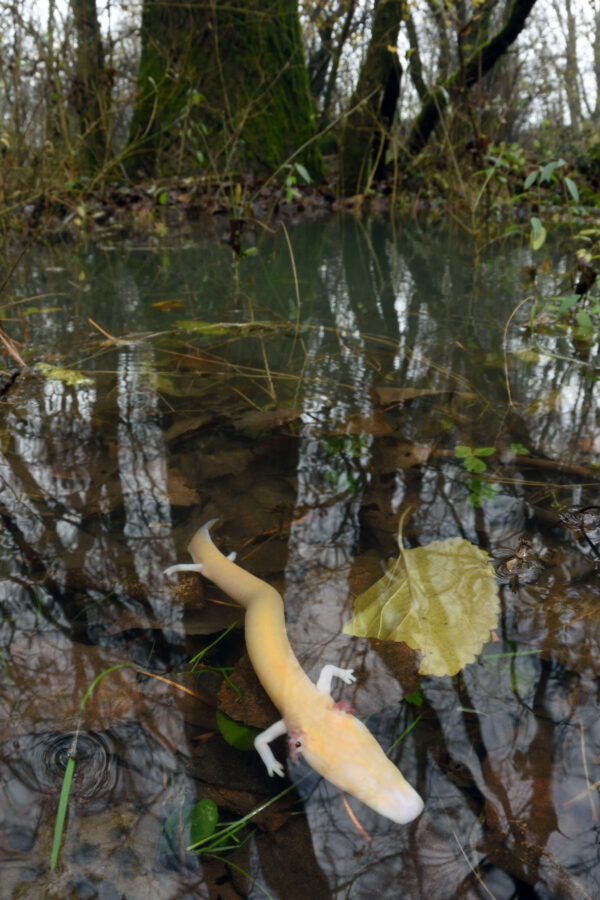
FIGURE 1
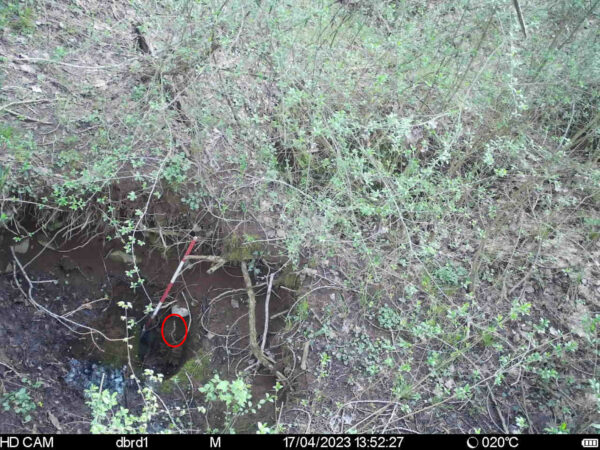
FIGURE 2
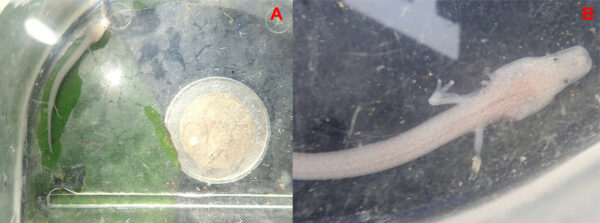
To date, very limited observations of olms outside caves are available (except for the black olms), and are attributed to individuals accidentally washed out of groundwater (Lanza et al., 2009) or to accidental movements occurring during nighttime at a single site along the groundwater–surface interface (Premate et al., 2022). So far, the possibility of active exploitation of surface habitats by troglomorphic populations has seldom been hypothesized (Bressi et al., 1999), and has remained without empirical evidence. We detected repeated and active exploitation of surface habitats at the border with groundwater by a species considered to be strictly subterranean. Unexpectedly, olms were repeatedly detected even during the daytime, when conditions of surface habitats (light, visual predator occurrence) are assumed to be particularly unsuitable for cave specialists. The occurrence of a larva in a spring is an exceptional finding. To our knowledge, it represents the smallest individual ever found in the field and the only larva found outside caves, as well as the only larva found in the Italian range of the species. According to data from captive-bred olms, larvae of such size could have ages of 90–110 days. During this time span, no flooding was recorded in the study area, which, in contrast, was experiencing a drought (Monteleone et al., 2023). This finding could suggest that springs with their interstices and crevices can be suitable for breeding P. anguinus. At birth, larvae possess functional eyes (Durand, 1963; Friedrich, 2013), that might allow them to perceive prey and predators in the twilight zone between surface and groundwater. Nevertheless, springs probably are more risky than groundwater habitats, thus breeding is expected to occur underground, with some larva exiting after hatching (Barzaghi et al., 2017).
Our natural history observations indicated that olms can regularly exploit surface environments, where they can perform key activities such as feeding. The observation of terrestrial earthworms predated by olms confirms this hypothesis, and the importance of surface environments as a food source should be quantified by future stomach-flushing analyses, or by metabarcoding analyses of feces (Ficetola et al., 2019). Recent studies have suggested that subterranean animals exploiting springs can obtain a significant proportion of food from organic matter of terrestrial origin (Nair et al., 2021). Our study confirmed that the inputs provided by the multiple surface habitats that border groundwater cannot be neglected when studying the biology of subterranean animals. Olms are the only stygobiont amphibians in Europe, whereas the Nearctic hosts several salamander species that are considered to be strict stygobionts (Bonett et al., 2014; Phillips et al., 2017) and could be surveyed in springs connected to the groundwater for more complete studies on the role of these environments for cave specialists. Similarly, numerous invertebrates considered strictly stygobiont are often recorded in spring habitats, but naively attributed to the groundwater that feeds those springs (Manenti & Piazza, 2021). In light of the frequency of an iconic subterranean animal like the olm in some surface environments, we propose that spring environments and their ecological peculiarities should be better taken into account by studies of subterranean biology. Such an integrated approach could be fruitful to understanding the ecology of underground environments, and better comprehending the evolutionary and biological processes affecting subterranean animals. Olm occurrence in springs highlights the importance of more studies on groundwaters and their borders, and suggests that we should approach cave biology processes with more flexibility. Species can show unexpected plasticity (Melotto et al., 2020; Tenczar et al., 2014) that can shed new light on scientific questions also from the darkness of the underworld.
ACKNOWLEDGMENTS
We are grateful to G. Pacinotti, M. Restaino, V. Messina, R. Pennati, B. Lombardi, V. Nanni, T. Fiorenza, and R. Bruschi for their help during field surveys. Olm samplings were authorized by the Italian Ministry of the Environment (the Italian Institute for Environmental Protection and Research) institution, permits n. 6957-02/13/2020 and 3267-03/15/2022.

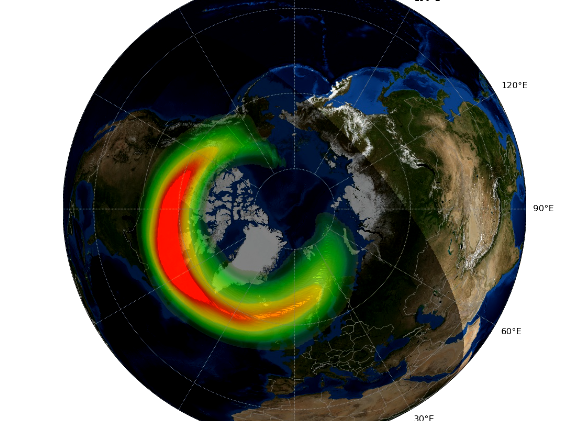
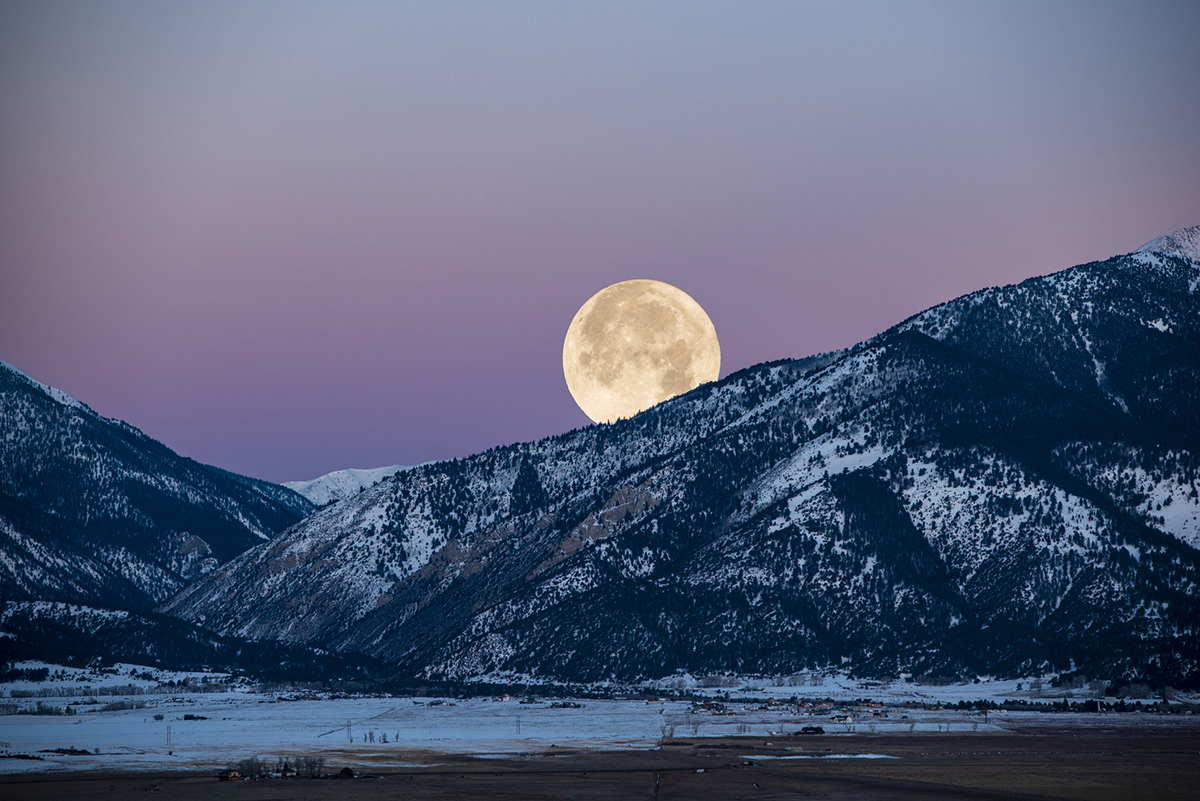
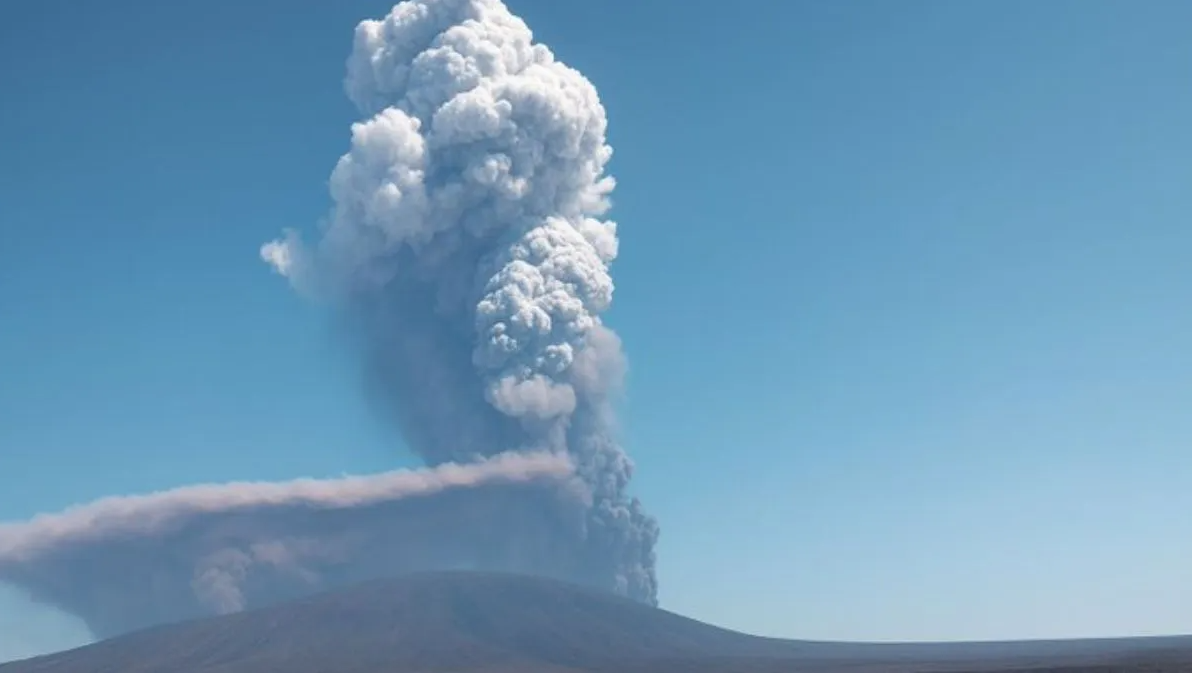

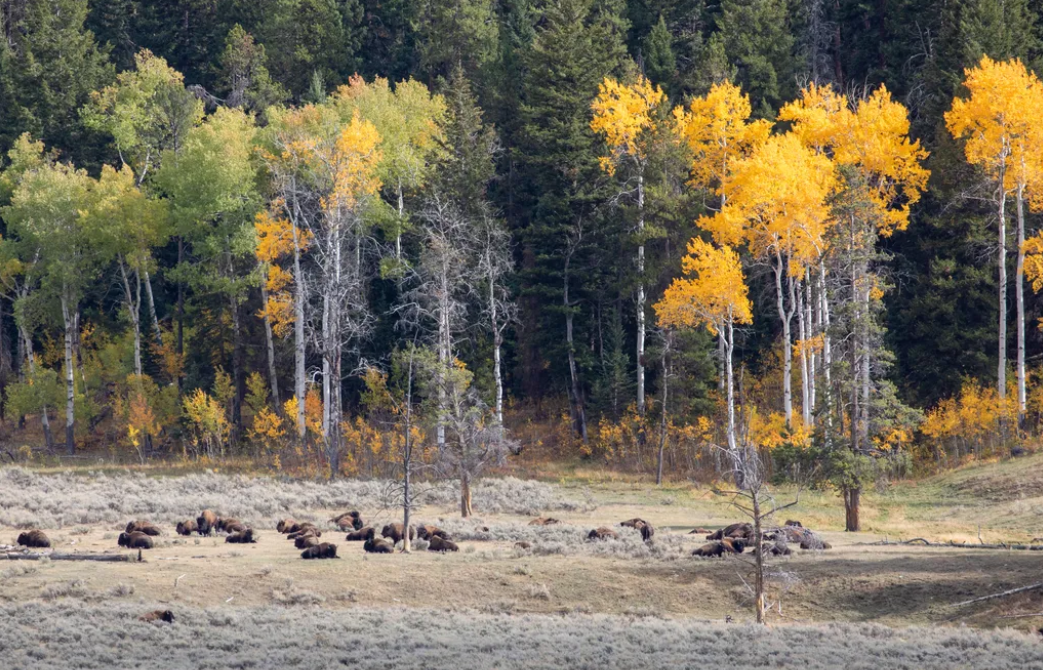

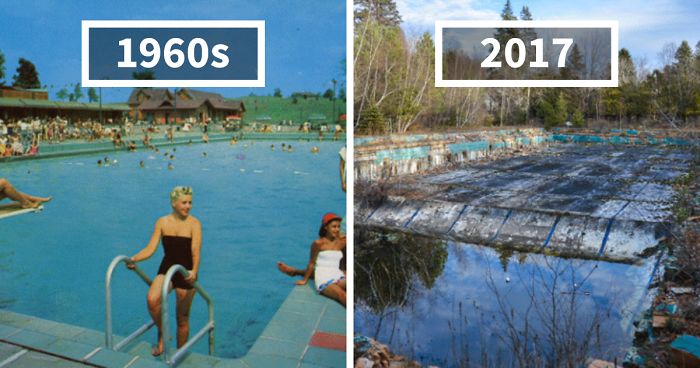 Photographer Finds Locations Of 1960s Postcards To See How They Look Today, And The Difference Is Unbelievable
Photographer Finds Locations Of 1960s Postcards To See How They Look Today, And The Difference Is Unbelievable  Hij zet 3 IKEA kastjes tegen elkaar aan en maakt dit voor zijn vrouw…Wat een gaaf resultaat!!
Hij zet 3 IKEA kastjes tegen elkaar aan en maakt dit voor zijn vrouw…Wat een gaaf resultaat!! 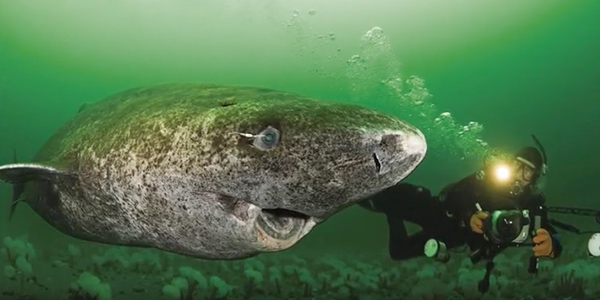 Scientists Discover 512-Year-Old Shark, Which Would Be The Oldest Living Vertebrate On The Planet
Scientists Discover 512-Year-Old Shark, Which Would Be The Oldest Living Vertebrate On The Planet  Hus til salg er kun 22 kvadratmeter – men vent til du ser det indvendigt
Hus til salg er kun 22 kvadratmeter – men vent til du ser det indvendigt  Superknepet – så blir snuskiga ugnsformen som ny igen!
Superknepet – så blir snuskiga ugnsformen som ny igen! 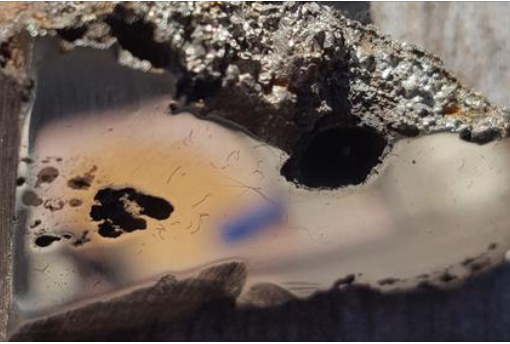 Meteorite That Recently Fell in Somalia Turns Out to Contain Two Minerals Never Before Seen on Earth
Meteorite That Recently Fell in Somalia Turns Out to Contain Two Minerals Never Before Seen on Earth  Nearly Frozen Waves Captured On Camera By Nantucket Photographer
Nearly Frozen Waves Captured On Camera By Nantucket Photographer  It’s Official: Astronomers Have Discovered another Earth
It’s Official: Astronomers Have Discovered another Earth 